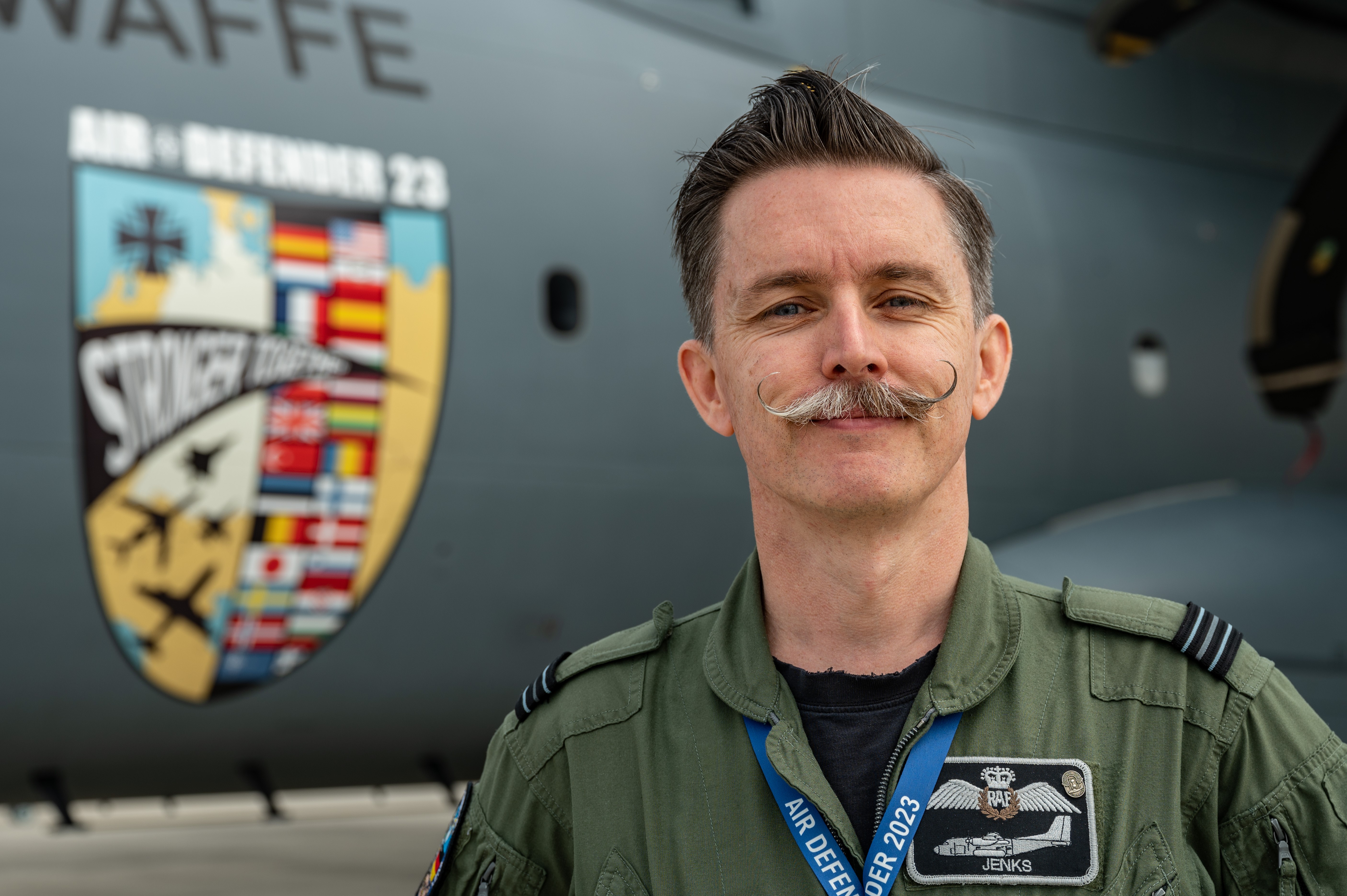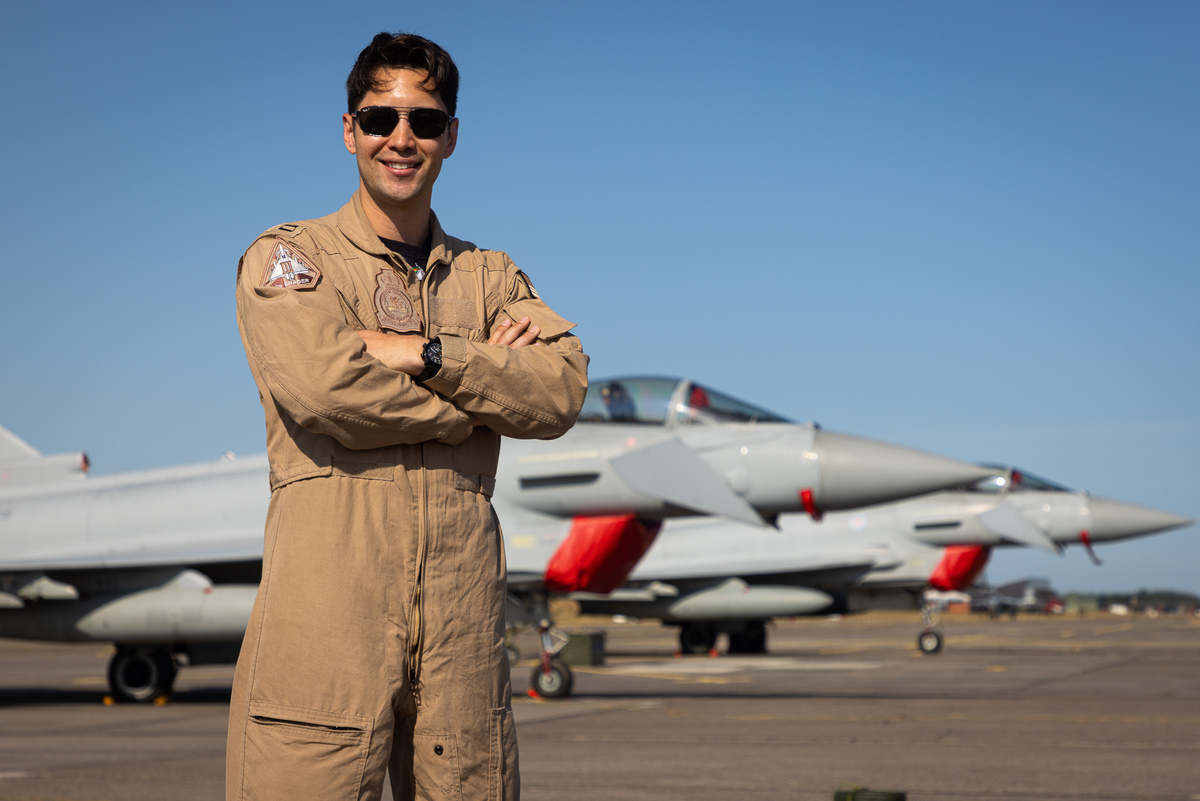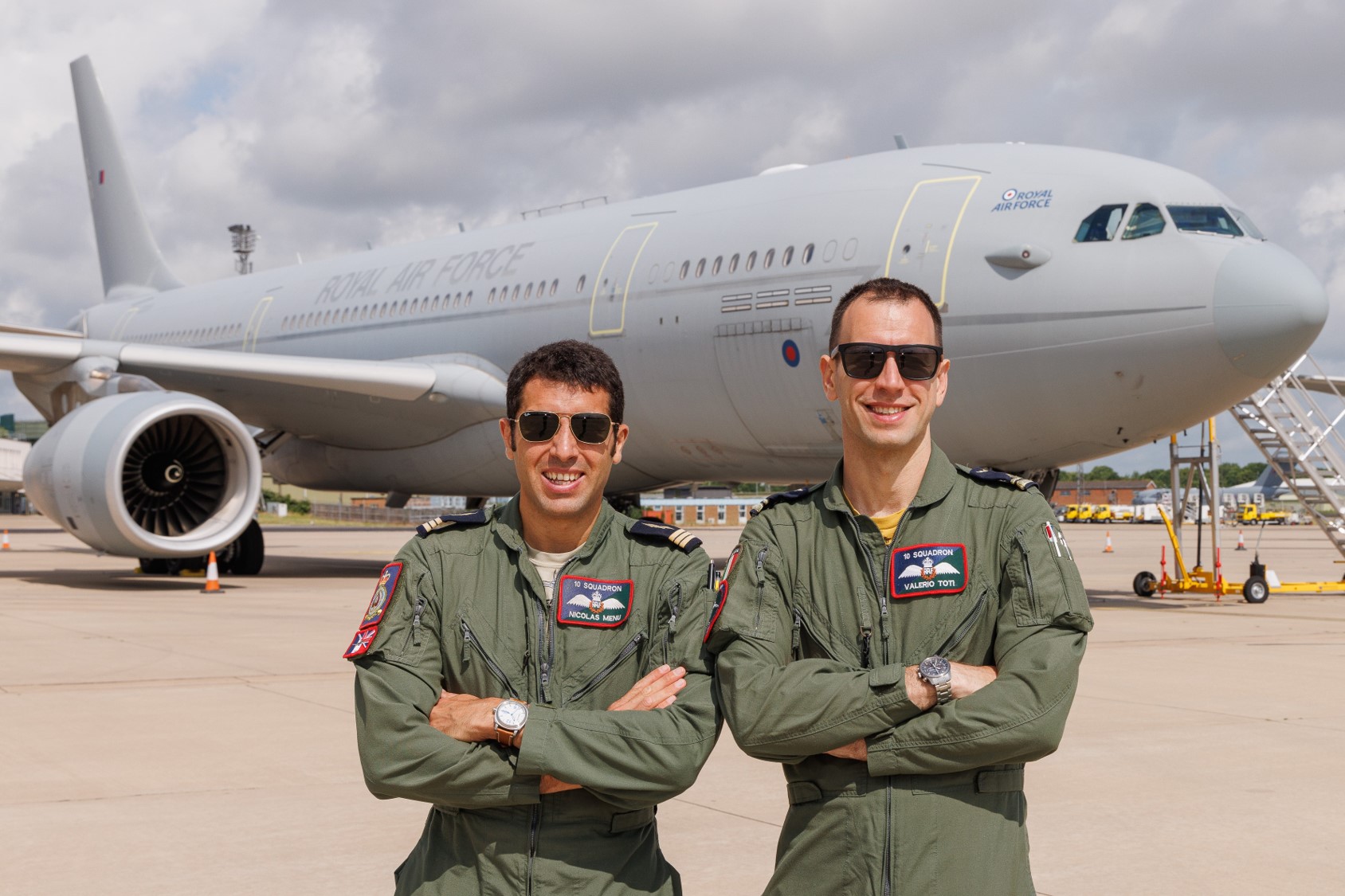Royal Air Force jets have taken part in the largest NATO air deployment exercise for many years, to practice the Agile Combat Employment concept. This was carried out by the forward deployment of aircraft and personnel from Cyprus and Estonia to Germany for the exercise.
.jpg)
Exercise Air Defender 23 is the largest NATO deployment air exercise that has been run since the end of the Cold War and is primarily designed to improve interoperability and cooperation. During the exercise around 250 aircraft from 25 nations and 10,000 personnel took part in the exercise.
.jpg)
As part of the exercise a number of pilots were involved who are on long term exchange programmes between nations. For the RAF that has meant one RAF pilot was flying with the German Air Force, while three pilots, one from the United States Navy, one from the French Air and Space Force and one from the Italian Air Force took part, flying RAF Aircraft.
The RAF pilot flying with the German Air Force was Flight Lieutenant Jenkins who is currently operating the Atlas A400M with Air Transport Wing 62 of the German Air Force. During the exercise Flt Lt Jenkins has been mainly flying air-to-air refuelling sorties, a role that Voyager aircraft fill in the RAF rather than Atlas. He also flew the lead German Atlas aircraft for one of the multinational aircraft formations at the start of the exercise.

“Exercise Air Defender 23 is important as an opportunity for proving how we work together. Within a short number of days, a force of 250 aircraft from 25 different nations come together to project Air Power wherever that needs to be. During large multinational exercises like this, exchange pilots also play a key role in providing additional understanding of how different nations operate, as well as offering a liaison function."
Flt Lt Jenkins
Royal Air Force
One of the pilots flying the RAF Typhoons on the exercise was Captain Hanrahan of the United States Navy who is on exchange with the RAF squadron currently based at RAF Akrotiri in Cyprus conducting operations in the Middle East Joint Operational Area. Capt Hanrahan, together with an RAF pilot, flew two Typhoons to Germany. Once there, they joined another pair of RAF Typhoons and personnel from 1(Fighter) Squadron currently deployed to Estonia conducting the NATO’s Baltic Air Policing Mission, to form one cohesive forward-deployed composite unit.

“It means a lot to the RAF to participate in this exercise and operate with our NATO allies, there's a lot of great training opportunities here based on the Agile Combat Employment concept, allowing us to forward-deploy rapidly across the globe. In our case, these four RAF Typhoons have come from already deployed locations in Estonia and Cyprus. We've got to be able to rapidly deploy all our assets; not just the fast jets and the pilots, but the tankers and all supporting elements”
Capt Hanrahan
United States Navy
In addition to the RAF Typhoons that were based at Hohn airbase for the exercise, the UK supported the exercise with F35-B Lightning II and Voyager air-to-air refuelling (AAR) aircraft operating from the UK in German airspace.
Flying the RAF Voyager which provided AAR support to the exercise in addition to the RAF crews have been Captain Menu from the French Air and Space Force and Major Toti from the Italian Air Force.

These refuelling sorties are a key element of the interoperability training. For one sortie Capt Menu gave fuel to German and Spanish aircraft in addition to refuelling RAF jets. This allowed debriefing on the difference between the procedures with the aim of improving the collective learning of the participants.
“There are lots of opportunities related to being an exchange officer. I would say that the biggest one is to see and experience how the RAF operates; to learn from them and take this professional experience back with me for my future career.
The benefits of having exchange pilots on large multinational exercises like Air Defender 23 is having someone who is not used to the RAF way of thinking that can give a different perspective when approaching new challenges. If we see the RAF as a person then NATO is our team. We need to be able to work together to reach our common goals in a more effective manner than if every nation operated independently”.
Major Toti
Italian Air Force
Exercise Air Defender concludes at the end of the week.





